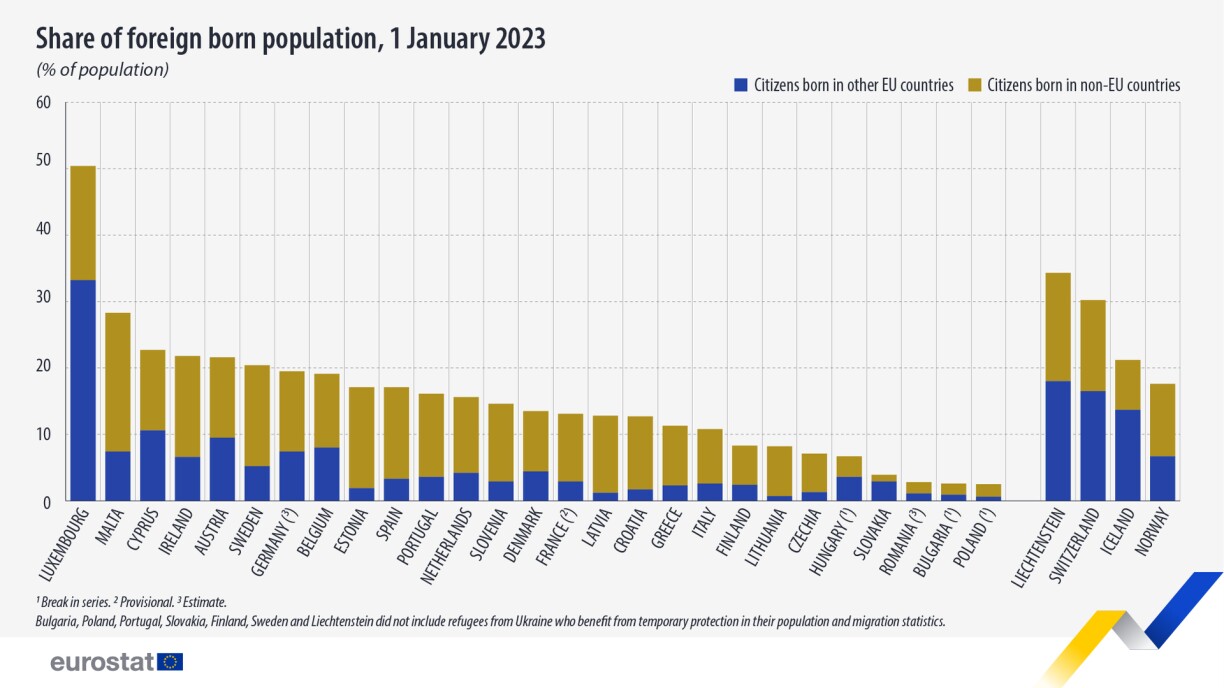
Luxembourg’s overall attractiveness needs no further proof, nor it’s dependence on foreign labour.
Statec’s latest census already supported this observation, finding that in 2021 49.3% of Luxembourgish residents were born abroad. However, the threshold of 50% has since been crossed, as Eurostat confirms this week: As of January 1, 2023, 50.4% of Luxembourg’s population was born abroad.
Therefore, Luxembourg is indeed the most cosmopolitan country in the EU, as can be seen in the graph below:

Far behind, Malta (28.3%) and Cyprus (22.7%) come in at second and third place respectively, completing the top 3. The lowest proportions of foreign-born residents were recorded in Poland (2.5%), Bulgaria (2.6%), and Romania (2.8%).
Read on: Luxembourg birth rate is gradually falling, says Eurostat
Another record held by Luxembourg is having the largest proportion of residents from an EU country (33.2%), followed by Cyprus with 10.6% and Austria with 9.5%.
However, in terms of the highest proportions of residents born in non-EU countries, Malta (20.9%) took the top spot, followed by Luxembourg (17.2%). Ireland, Sweden, and Estonia each recorded a share of 15.2%.
The lowest proportions of residents born outside the EU were recorded in Slovakia (1%), Bulgaria, and Romania (1.7% each).
In 2022, 5.1 million people immigrated to the EU from non-EU countries, while 1.0 million people emigrated from the EU to destinations outside the EU.
The influx of immigrants from non-EU countries has more than doubled compared to the 2.4 million recorded in 2021. In contrast, the number of EU residents emigrating to third countries remained stable, with 1.0 million emigrants in 2021.
Relative to the size of the resident population, Malta recorded the highest immigration rate from both EU and non-EU countries in 2022 (66 immigrants per 1,000 inhabitants), followed by Luxembourg (48) and Estonia (37).
Slovakia recorded the lowest immigration rate with 1 immigrant per 1000 habitants, followed by Bulgaria and France, each recording 6 immigrants per 1000 habitants.
Finally, in absolute terms, the largest numbers of foreign-born residents (from other EU countries and non-EU countries) were registered in Germany (16.5 million people), France (8.9 million), and Spain (8.2 million).